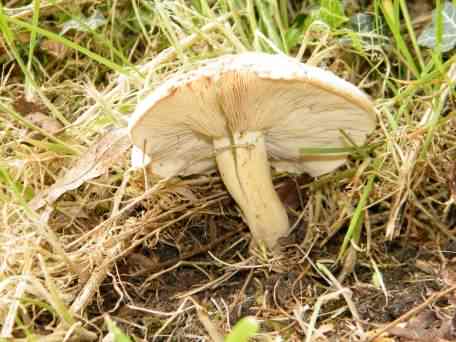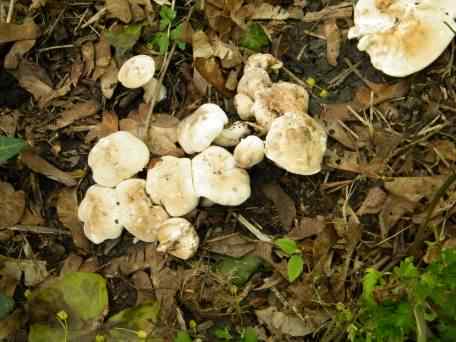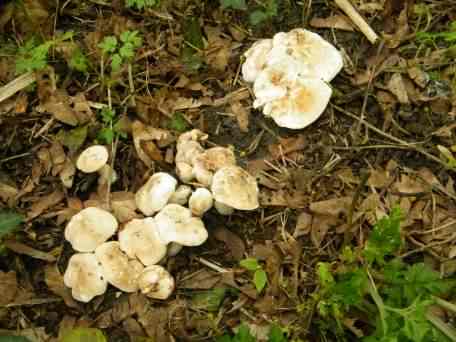
Photo ©2012–
Click for a larger image
More photos
Photo ©2012–
Click for a larger image
St. Georges Mushroom - Calocybe Gambosa
Family - Lyophyllaceae
Previously - Tricholoma gambosum
A large and common mushroom species in Europe and Asia growing mainly in fields, grass verges, woodland edges, roadsides and grasslands, often in limestone rich areas. 5–15cm (2–6in) in diameter with a smooth texture and ridges, the cap, stem and flesh can vary from white–creamy coloured to bright yellow. its common name is reported to be derived from its usual first appearance in the UK - St. George's Day - 23rd of April, actual appearance depends on temperature, appearing earlier in warmer countries.
In Southern England, this species has reputedly formed large "fairy rings" which may be several hundred years old. Previously classified in the genus Tricholoma, it was later named Tricholoma gambosum before being reclassified as Calocybe gambosa. The gills are sinuate, white, densely packed, spore print is white to pinkish white, the cap has a slightly inrolled margin and is often quite lumpy with a strong "floury" odour.
BCP do not advise or recommend that St. George's mushroom – Calocybe Gambosa is eaten or used as an herbal remedy. St. Georges Mushroom is not edible.
St. George's mushroom, is an edible mushroom that is considered a delicacy, especially when fried, the flesh is thick and soft and has a mealy or cucumber smell. Fried in butter or sautéd with egg or bacon, it is a popular species on mainland Europe.
 Photos ©2011 |
 Click any photo for a larger image |
 Close window |
Site design ©1999– Brickfields Country Park - Privacy -